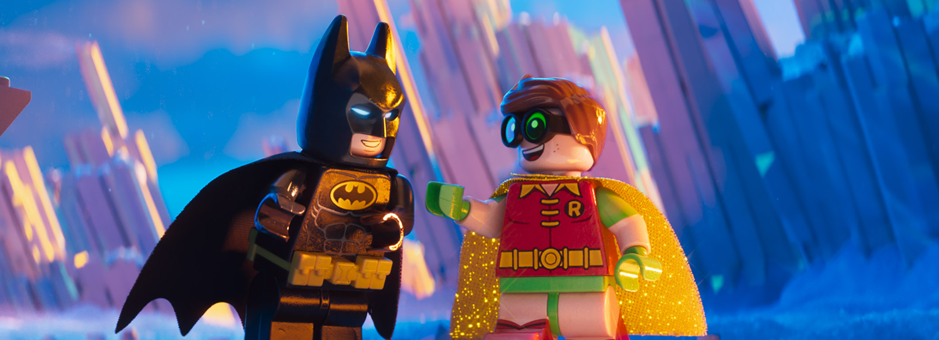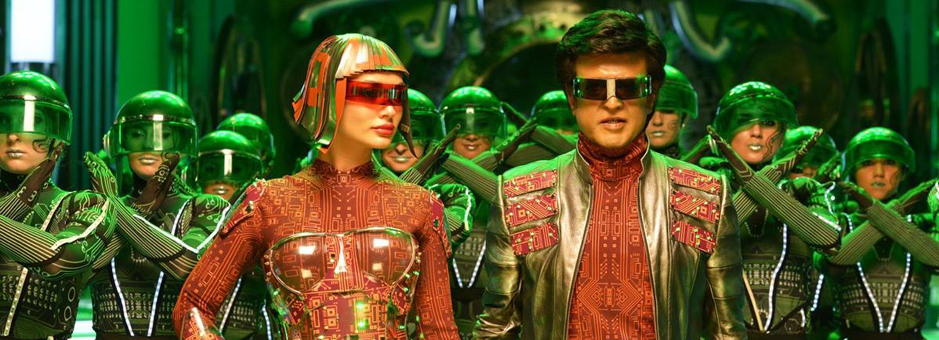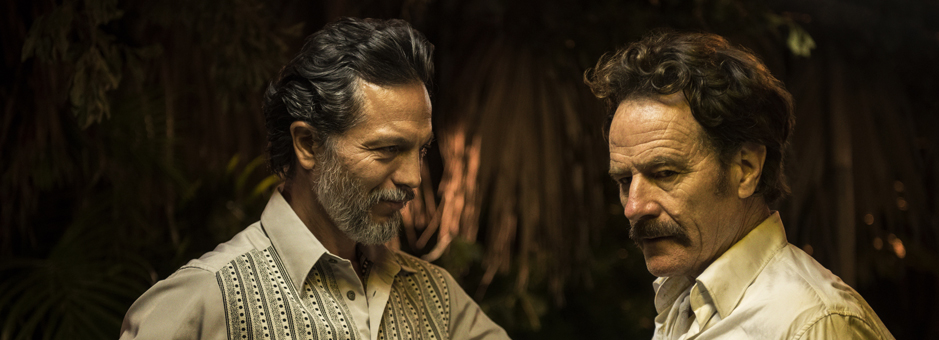Meet The Colourist
Sam Chynoweth
Colourist, Technicolor London
Sam Chynoweth joined Technicolor in July 2018 and brings a mixture of animation and live action experience to Technicolor’s London colour team. Sam previously worked as a colourist in Australia on a number of different projects, including The Lego Movie, The Infiltrator, Peter Rabbit and The Lego Batman Movie.
I’d had a strong interest in image manipulation throughout college and was pretty sure I was destined to be a compositor (or a shake jockey as my lecturer liked to call them). After a few false starts, including a stint as a trainee cheese maker, I entered post-production as a VFX review assistant at Animal Logic, in Sydney Australia. I was pretty much a glorified VCR machine looping through shots all day (yelling “play it again Sam” brought a chuckle to most supervisors). But it wasn’t too long before I realised I had an amazing and unique opportunity to listen to some of the top visual effects supervisors and production designers, and to hear them breaking images down and discussing them in great detail.
We were running these sessions out of our grading theatre, leaving me seated behind this impressively illuminated colour panel. After a particularly long and arduous review session, two supervisors were stuck arguing over a shot of a burning moose. I quietly reached over and spun the gamma wheel - both of them turned around and exclaimed “yes, that!”
That really was the beginning for me as a DI operator. From there I was very fortunate to assist some amazing artists who were always more than willing to answer my barrage of questions and help me learn the craft.
You’ve recently joined the team at Technicolor in London. Why did you decide to join the company?
It was a tough decision to leave the sunny beaches of Australia behind, but there was no way I could pass up the opportunity to work with one of the most prestigious post-production companies in the world. Technicolor London sits right at the heart of the UK film industry and offers me the chance to work with new collaborators and diversify my skillset.
My role in Australia differed in that I was primarily working for a production company; they tended to offer longer schedules, with my role beginning in the early look development stages. Having such a long involvement with a project allowed me to focus on the imaging in a very detailed way. We were really able to push the boundaries of what was achievable in the DI process.
Now, in a more traditional post services role with Technicolor, I am looking at the ways we can incorporate the benefits of a detail-orientated finish into a traditional post schedule.
What was the first project you ever graded?
My first solo outing was a short film for a friend of mine. He had managed to borrow a Red One camera for the shoot, which turned out to be quite the crash course in raw management. My first professional credit was fittingly on the TV featurette Lego Star Wars: The Padawan Menace. It was a fantastic little project and started a lot of the discussion that went on to form The Lego Movie.
How long have you been using Baselight?
I’ve been using Baselight for about five years now, having switched over from Digital Vision’s Film Master. Baselight feels intuitive and it is quick to pick up and learn. That said, there is a sophistication and depth behind Baselight that enables real flexibility; the list of what can be finished in the system grows with each release.
What are the main benefits of Baselight when working on animated and stereoscopic productions?
Baselight’s support for multi-channel EXR has had a massive impact on the workflow of animated features, offering huge benefits to image control and greatly reducing the amount of transfer work when preparing a stereo timeline.
The flexibility of Baselight’s EXR implementation allows us to carry dozens of supplemental channels such as World-Space-Position (WSP) and Normal Map information. This, in turn, allows us to use the newly implemented Matte XYZ tool [which isolates static objects so they can be graded individually], and adding reflection and volumetric passes gives us an amazing level of control over the finishing of an image.
Another benefit of working with Baselight is the flexibility that it delivers to stereo. Baselight is able to recognise multiple ‘views’ within EXR channels, allowing us to embed all of our mono and stereo imagery into a single sequence. Baselight will also seamlessly update all of the mattes referenced in a grade stack based on the view option, which greatly speeds up the process of transitioning the grade over to stereo.
Every job will always have unique challenges. There are three categories of film I’ve worked across. Animated features offer unparalleled levels of control (especially when harnessing multi-channel EXRs) and it can be easy to lose your way amongst the detail, neglecting the bigger picture and its consideration beyond a sequence of shots. VFX-heavy films often require a lighter touch, with extra consideration needed to avoid upsetting the integration of the visual elements. And of course, traditional single camera drama, which is often a delicate balance of speed and detail.
2.0 was my first experience working on a big Indian feature and it was an absolute blast! The film-makers wanted to give Indian audiences a home-grown experience akin to the western spectacles being produced by Marvel and DC. The movie ticked off a lot of firsts for an Indian production, with the largest budget, native stereoscopic acquisition and the most extensive use of visual effects.
I was brought on right at the end of the three-year production to offer a western perspective. The DOP, Nirav Shah, was keen to give the film a look that would be unique to the Indian market and in line with the ‘Hollywood blockbuster’ theme. The project was definitely one of the tightest schedules I have worked on, with new shots arriving right up until the day of the DCP wrap, just five short days before the film premiered (in three different languages!).
The most rewarding part was seeing the film’s reception - the energy and excitement the fans have is like no other audience I have ever seen.
We took a fairly unusual approach to find the look of the film. I completed my first grading pass with minimal external direction. Nirav sat and watched quietly as I found my way through the footage. He was very keen to look at the film with a purely ‘Hollywood’ aesthetic, free from domestic influences and styles. Once we had a fairly solid pass we stopped and took some time to discuss how we might layer in some of the more traditional Indian cinema attributes to give the film a truly unique feel. From there we went through it together, refining the balance of scenes and the shots within.
We spent a significant amount of our grade time working closely with VFX Supervisor Srinivas Mohan polishing the visual effects. Shots were coming in thick and fast from a number of vendors across India and internationally, and for many of them it was their first project using an ACES pipeline, which was a learning curve for them.
Which Baselight tools were particularly beneficial on this project?
We would have been in real trouble without Baselight’s sophisticated colour management tools. I arrived to three years of delivered VFX work as many of the smaller vendors had problems with their implementation of the ACES pipeline. The tight schedule meant we couldn’t always request redelivery so we used Baselight’s colour space conversion tools to unpick and convert every delivery into a usable format.
How long were you working on this movie and do you have any anecdotes to share with us?
It was a four-week grade across the feature, marketing and music video. It was challenging dealing with large sequences of VFX that weren’t delivered until the final days. In an ideal world another week clear of visual effects deliveries would have given us a good opportunity to review the piece as a whole.
This was my first visit to India and I was very keen to experience some of the amazing cuisine on offer. So after a long day grading Nirav stopped off at a kerb-side market stall where he ordered us a freshly squeezed sugarcane and ginger juice. I gulped it down greedily, finishing just in time for Nirav to sheepishly inform me that the juice was a fantastic intestinal cleanser. It was very effective!
This shot is a good example of how we’re always walking the balance between creating beautiful imagery and communicating the story. It is a visually busy shot with thousands of phones buzzing and vibrating along the walls of the room, breaking away to encircle a terrified businessman in a virtual tornado of cell phones. The screens of the phones all light up presenting us with the calling card of the antagonist, a small sparrow bouncing around a forest backdrop. That’s an awful lot of information to present to a viewer in the space of a few seconds.
I work backwards with a priority list of story points, and if the viewer only takes one thing away, it needs to be the actor’s performance. I use a lot of incredibly soft, dynamic vignettes to guide the eye to the subject using variations in the luminance and contrast. To improve the recognition that this event was being caused by our antagonist, I shifted the colour temperature of the phone screens closer to a tone used earlier in the film to help link the events in the viewer’s mind. Finally, I applied some frequency management to the phones surrounding the outside of the room to minimise attention stealing and tiring detail without eroding the overall separation and impression of the individual phones.
What are your thoughts on HDR?
It’s a bit of an arms race at the moment. The high rate of variance between manufacturers does make it technically tricky to deliver viewers with a consistent creative vision.
On the creative side, I am very excited. I believe the extended dynamic range really adds depth and dimension to an image. I don’t believe it’s a simple step up from SDR and it doesn’t work as a derivative deliverable - it requires a different approach to the management of a scene’s contrast ratio. The sooner the creative team is able to start viewing their footage in HDR the better positioned they are when it comes time to grade.
For me now it will be a real focus on developing relationships here in the UK. I’m excited by the prospect of meeting with a new and diverse group of collaborators and to keep making beautiful images.
We will also be looking to further develop our pipeline and how we can integrate more on large VFX heavy shows and stay at the forefront of development.
Join In
If you want to participate in our MTC programme, we'd love to hear from you. Contact:
Alexa Maza
e: [email protected]

“It was a tough decision to leave the sunny beaches of Australia behind, but there was no way I could pass up the opportunity to work with one of the most prestigious post-production companies in the world.”
Details
Colourist: Sam Chynoweth
Role: Colourist
Web: Technicolor London








